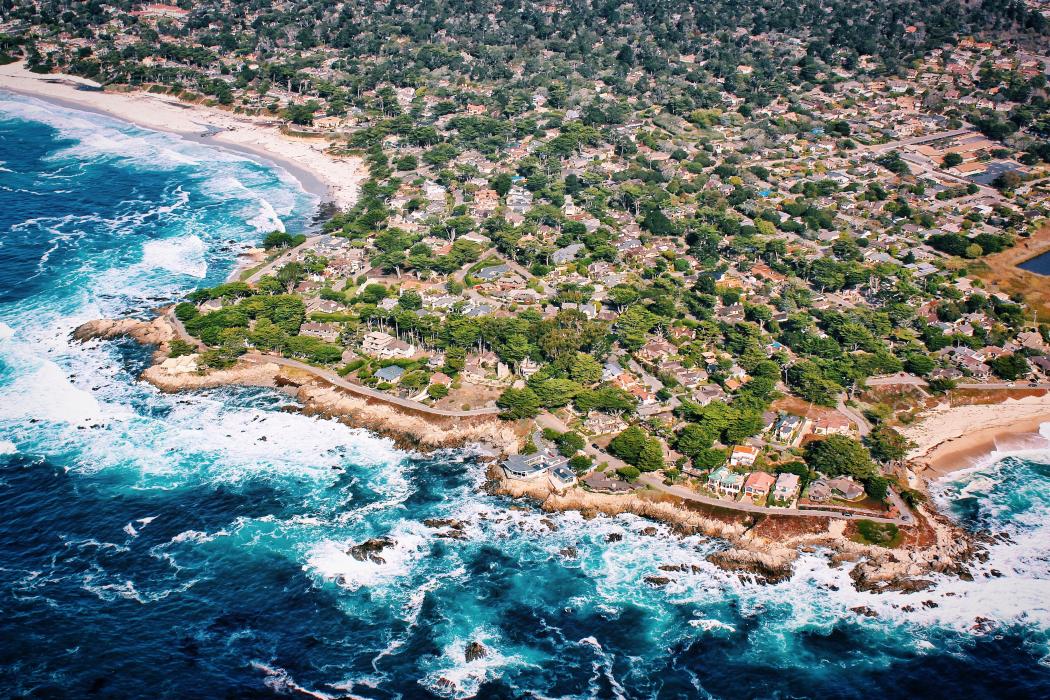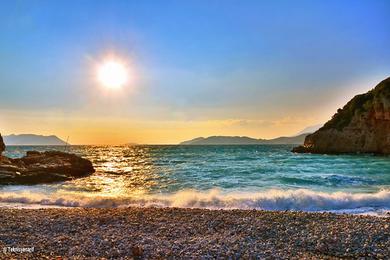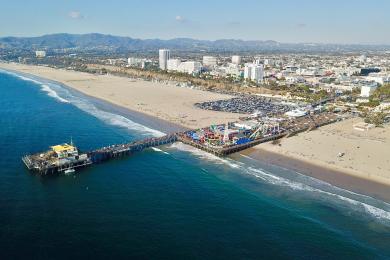Located in Point Lobos State Natural Reserve, Point Lobos State Natural Reserve - China Cove has a small beach with light brown sand. The beach is situated below steep oceanfront bluffs and is surrounded by rocky cliffs sides. The water near the beach is shallow and has a beautiful emerald color. The beach also has a natural rocky archway and a small cave near its southern part. Getting to the beach in Point Lobos State Natural Reserve - China Cove is easy - the entrance to Point Lobos State Natural Reserve is located near 62 California State Highway 1 / Pacific Coast Highway, and the nearest paid parking lot to the beach is located in the reserve’s southern part. From this paid parking lot, you can easily walk to the blufftop area above the beach. However, the access trail leading to Point Lobos State Natural Reserve - China Cove is currently closed off to the general public as the bluff sides surrounding the beach are significantly eroded away, making them unstable and unsafe. Nevertheless, the blufftop area above the beach in Point Lobos State Natural Reserve - China Cove offers an excellent Instagram-worthy view of the beach below. In addition, the beach in Point Lobos State Natural Reserve - China Cove is used as a breeding ground by harbor seals usually between April and May. From the blufftop area above the beach, you can also see a variety of other marine mammals including sea lions, otters, dolphins, and migrating grey whales (between December and April). If you like birdwatching, the blufftop area above Point Lobos State Natural Reserve - China Cove also offers a clear view of the nearby Bird Island rock formation. This rock formation has a huge seabird colony during summer and spring every year and you can see many species of birds here including gulls, herons, and cormorants. Point Lobos State Natural Reserve is often referred to as "the crown jewel" of California’s state park system and has been described by renowned landscape artist Francis McComas as the "greatest meeting of land and water in the world." The natural reserve has a beautiful and stunning landscape that includes Monterey cypress forests (the reserve has one of the only two remaining naturally growing groves of Monterey cypress trees on Earth), coastal scrub, rocky headlands, and tidepools. In addition, many interesting animals are also found here including gophers, foxes, bobcats, deer, squirrels, lizards, snakes, raccoons, and skunks. You can explore the vibrant flora and fauna and the unique topography here via walking trails present throughout the reserve. If you like diving, there are many scuba diving sites present in Point Lobos State Natural Preserve that offer a unique way to explore the amazing underwater topography and biodiversity present in the water near the beach. You can find more information on the permits required for scuba diving in Point Lobos State Natural Preserve on the California Department of Parks and Recreation’s website. The reserve also has a whaler’s cabin which was built by Chinese immigrants in the 19th century. This cabin is now home to a museum that has interesting exhibits on the rich cultural history of the Point Lobos State Natural Reserve. Point Lobos State Natural Reserve’s natural beauty has also been a source of inspiration for many local artists and photographers. In addition, many movies have also been shot in or near the reserve including the 1989 Tom Hanks movie Turner and Hooch and the 1967 Dustin Hoffman movie The Graduate. The Point Lobos Foundation also organizes guided tours around the reserve. If you want to be a part of a guided tour, you can look for more information on this link - https://pointlobos.org/plan-your-visit/guided-tours. The reserve also hosts the Point Lobos Summer Adventure Program for kids aged between 8 -12 which includes many fun and informative activities including hiking and wildlife watching excursions along with participation in resource projects.
















